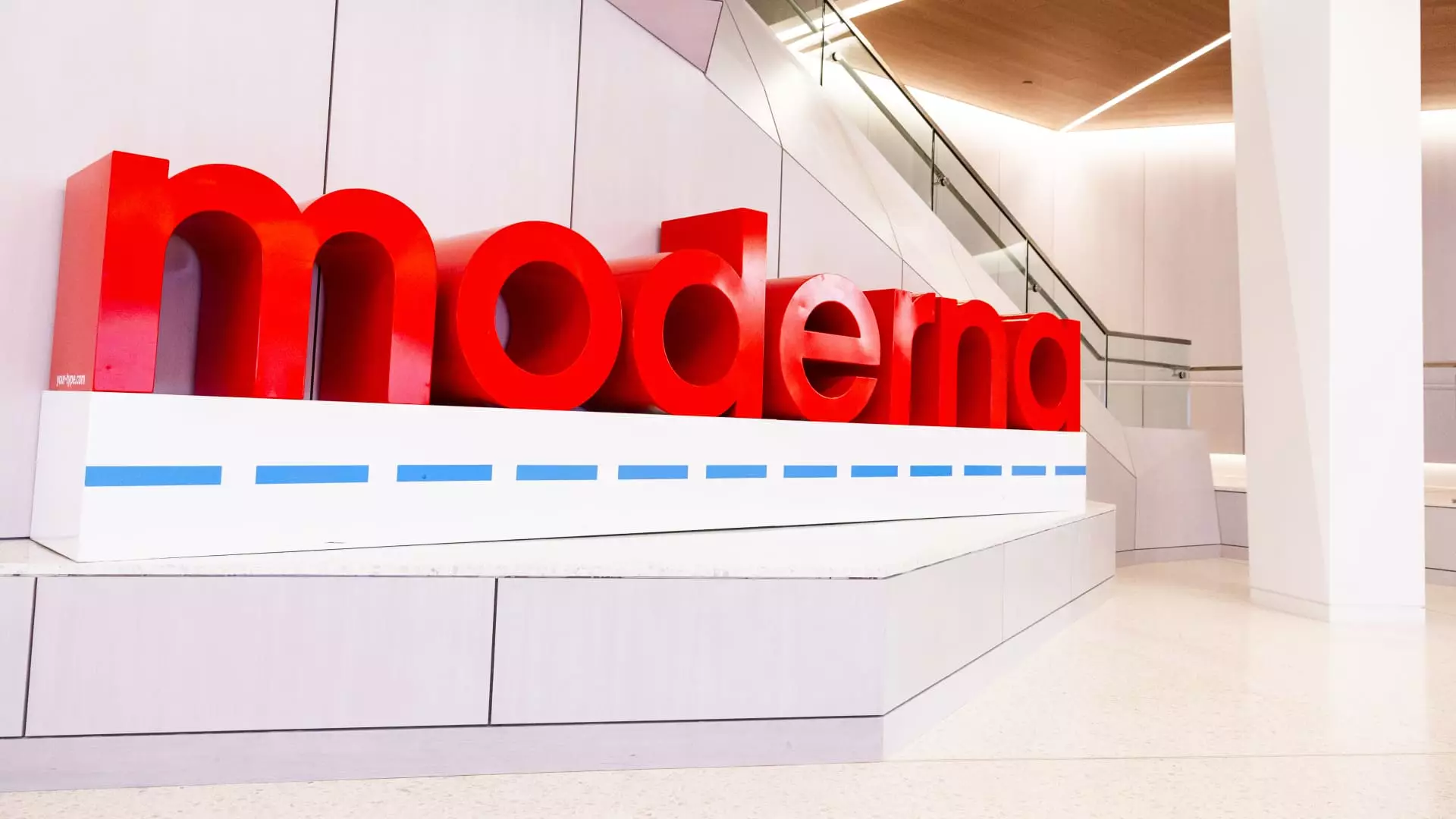Moderna’s latest quarterly earnings report reveals a rather sobering picture of the biotech company as it grapples with the aftermath of the pandemic. In the fourth quarter of 2024, Moderna reported a net loss of $1.12 billion, translating to a loss per share of $2.91. This figure starkly contrasts with the net income of $217 million—or 55 cents per share—recorded during the same period last year. Analysts had anticipated a smaller loss, expecting a loss per share of $2.68 and revenues of $942.8 million. However, Moderna’s actual revenue of $966 million fell significantly below expectations, raising concerns about its future viability.
In a sign of the tumultuous financial environment, shares of Moderna fell over 4% in premarket trading. The company attributes some of its financial struggles to adjustments made in its operational strategy, including a non-cash charge of approximately $238 million related to the termination of a contract manufacturing agreement. This loss is indicative of a company attempting to adapt swiftly to a declining market for Covid vaccines while simultaneously eyeing new product launches.
Amid these financial pressures, Moderna has embarked on an aggressive cost-cutting initiative, successfully reducing its expenses by 27% compared to 2023, and the company plans to further slash costs by $1 billion by the end of 2025. While cost-cutting can stabilize finances in the short term, it raises questions about the long-term sustainability of the company’s research and development capabilities. The decrease in research and development expenses—down to $1.1 billion in the fourth quarter—might curtail future innovation and product development.
Moderna’s Chief Financial Officer, Jamey Mock, has emphasized the necessity of these reductions while also acknowledging the potential risks. “Should those potential headwinds all hit, that’s what would bring us to the low end of our guidance,” Mock explained, indicating that the company is not merely in a reactive state but is also anticipating challenges ahead.
The significant drop in Covid vaccine revenue—down 66% from last year, bringing in only $923 million—illustrates a stark decline in demand. The company blames the earlier launch of its updated vaccines last year for shifting sales patterns, noting that it was able to meet demand more effectively in the previous quarter. However, the ongoing decline in vaccination rates and increased competition within the Covid vaccine market poses considerable challenges.
As Moderna prepares to navigate this landscape, it has downsized its sales guidance for 2025 by approximately $1 billion, a dramatic move that has heavily impacted its stock performance, which is down over 20% year-to-date. Questions arise whether the company can pivot effectively from its reliance on vaccines, and whether the consumer base for Covid shots will rebound sustainably.
Looking Toward the Future: New Products on the Horizon
In response to these challenges, Moderna is focusing intently on expanding its product portfolio, hoping to introduce ten new product approvals over the next three years. The global rollout of its respiratory syncytial virus (RSV) shot, which accounted for $15 million in U.S. sales during the fourth quarter, represents a strategic move towards diversifying its offerings. This product has already received approval in multiple regions, reinforcing Moderna’s commitment to utilizing its messenger RNA platform for various applications beyond Covid.
Additionally, Moderna has submitted three new mRNA products for regulatory approval, including a next-generation Covid vaccine and a combination shot that targets both Covid and the flu. The forthcoming decisions from regulatory bodies are critical, as they will dictate the potential expansion of its product offerings and could stabilize revenues.
As Moderna stands at a crossroads following its tumultuous fourth quarter, the challenges it faces are both substantial and multifaceted. While costs have been cut to help manage immediate financial outcomes, the long-term viability of its product development and R&D investments remains a pressing concern. Moreover, the decline in demand for the Covid vaccine raises legitimate questions about how—if at all—Moderna can effectively pivot towards new markets and products.
Ultimately, the company’s ability to stabilize its operations while innovating its product lineup will be critical to its future in the biopharmaceutical landscape. Only time will tell if these strategies will bear fruit, but for now, Moderna must navigate these growing pains with a clear vision for recovery and growth.

